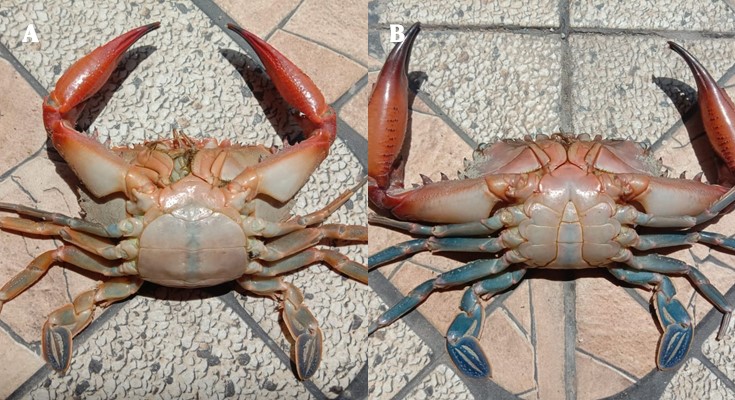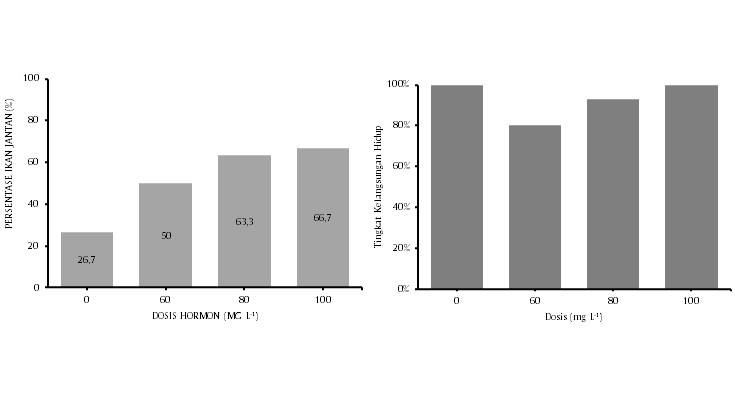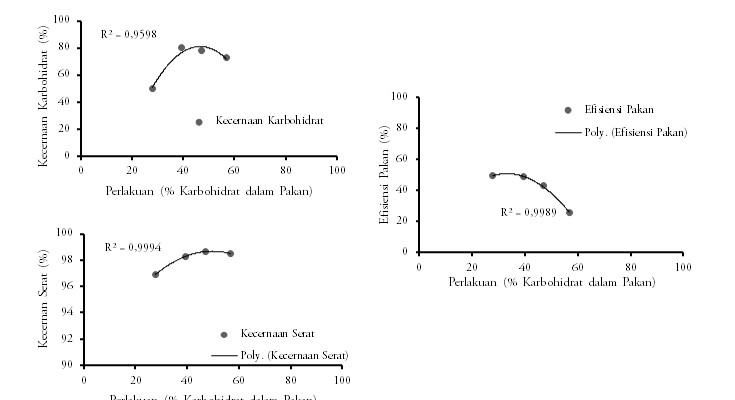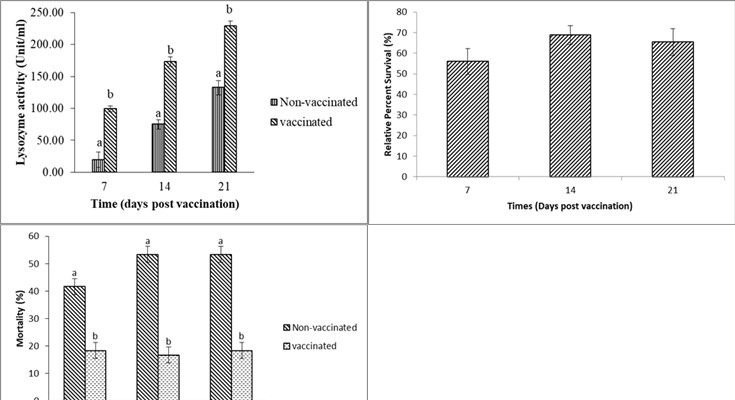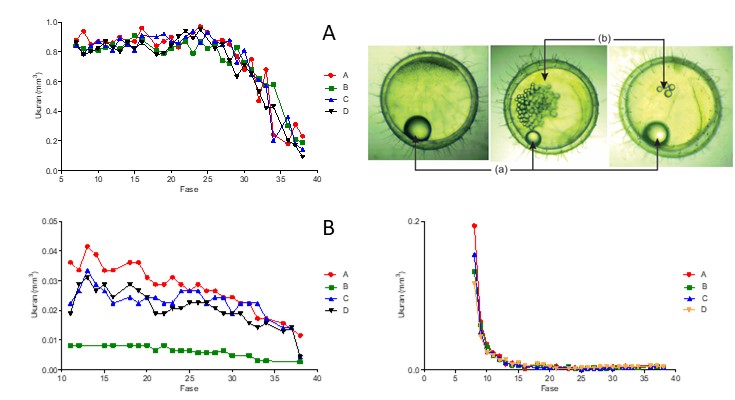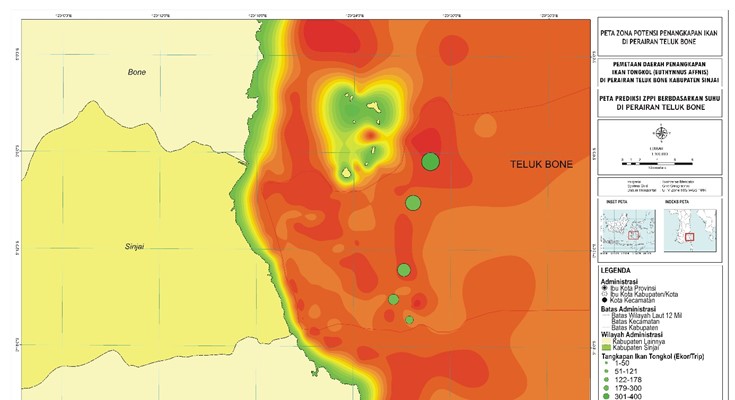
Mapping of fishing area (Euthynnus affinis) GIS based in Bone’s Bay Waters
The purpose of this study was to identify the relationship between oceanographic factors and the catch of tuna (Euthynnus affinis) and to determine the potential fishing zone (ZPPI) in the waters of the Gulf of Bone. The data collection method is carried out by literature study and field observation study by taking coordinate points and measuring oceanographic parameters. The types of data collected were temperature, salinity, currents, and tuna catches. Data were analyzed using GIS software with the Kolmogorov-Smirnov normality test and ANOVA test. This research was conducted in Bone Bay Waters in October-November 2018. The results showed that the highest catch based on sea surface temperature was in the range of 32°C with a total yield of 1207.5 kg, the highest net based on salinity was in the field of 34‰, namely as much as 836.5 kg, and the highest catch is based on a current speed of 0.04 m/sec, which is as much as 334.5 kg. Based on the ANOVA table, the significance value of the effect of temperature (X1), salinity (X2), and current (X3) simultaneously on the tuna catch (Y) is 0.0425<0.05 and the Fcrit>Ftabel (5.960>4,75) which means that there is a significant effect of oceanographic parameters on the tuna catch. Overlay analysis of oceanographic parameters shows potential areas for Euthynnus affinis is located most of the waters of Sinjai to the south of the Sembilan Island to the outside of Bone Bay.
- Lukman DarisLukmanDaris
- Jaya JayaJaya
- Andi Nur Apung MassisengAndiNur ApungMassiseng


